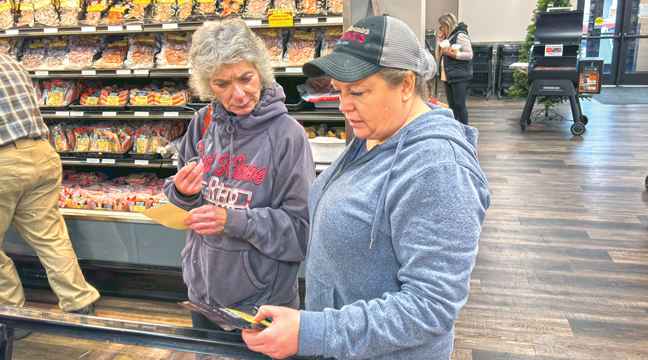Expanding broadband throughout Sherburne County is one of the county board’s most important goals.
But a recently-completed study shows it will take a lot of time and resources to accomplish.
Tuesday, Michael Kawlewski of Compass Consultants, Inc. gave the board a presentation based on a broadband feasibility study his company was hired to complete.
Kawlewski said the ultimate goal is “to connect anchor facilities, mostly along the Hwy. 10 and Hwy. 169 corridors with 1 gigabit (Gb) services that are ultimately scalable to 10Gb services and also to foster the availability of next generation broadband services to residents within the county.”
A smaller survey completed last year showed over half the businesses in the county are dissatisfied with their broadband service; about 37% of businesses believe their broadband service puts them at a competitive disadvantage and 60% would like faster connections.
Kawlewski said the reason broadband is not available in rural areas of the county is because of profits. He said existing providers, like Windstream, Century Link and Frontier are all large publicly-traded companies that tend to focus more on heavily urban areas.
“They spend more there because they need to make a return on their investment, and that happens when you pass more homes with less infrastructure,” he said. “When you get out to the rural areas where you pass five homes in a mile of fiber put in the ground versus a city where you get 500 homes in a mile, it’s easy to see why they do that.”
He said over the next six years, all three companies are planning to expand their services in the county, but only to a level of 10 megabits.
“That doesn’t meet the new standards that the FCC considers broadband, which is 25 Mb down(load) and 3 Mb up(load),” he said. “So even though they’re making improvements, they’re still going to be behind the curve by the time the improvements are made.”
Kawlewski said in order to bring a modern broadband system throughout the entire county, “the first step is to design a fiber network that focuses along the Hwy. 10 and Hwy. 169 corridors and hits cities and public facilities in the county.”
The network would connect government buildings, police and fire stations, schools, libraries, any public buildings and businesses.
That “middle-mile” core network would consist of 110 miles of fiber construction connecting 38 sites at a cost of about $7 million.
That “backbone” infrastructure would be the initial step to eventually expand to homes and smaller businesses in rural underserved and unserved areas.
Kawlewski said that network could be owned by the county, a company or as a partnership.
Anoka County partnered with Zayo Group to construct a 287-mile fiber network. Zayo owns and maintains the network and leases the network to the county at a fixed rate.
Carver County partnered with Jaguar Communications to build a 121-mile network. The county owns its fiber network and provides services to public and community organizations.
RS Fiber (Sibley and Renville counties) approached and received funding support of $13.7 million from 10 cities and 17 townships. That system is a cooperative owned by its subscribers.
Once the “backbone” is established, the next step would be deciding how to get broadband to individual homes and businesses.
Kawlewski said a “fiber to the home” network, which would provide any service to any location, would cost more than $90 million.
An alternative network would be a fixed wireless option using radio transmission towers. It’s a lower cost option, faster implementation with smaller infrastructure. But the system can be affected by weather and terrain. The estimated cost for that type of network is $19.1 million.
Kawlewski said funding options for construction of a network include grants, partnerships, communities, loans or revenue bonds. He said the county should continue to engage the state and federal government for funding and meet with potential providers.
Assistant Administrator Dan Weber said the next step will be to perform an in-depth market study to determine need and find out who would be willing to help pay for the network. The commissioners gave Weber to go-ahead to find out the scope of the survey and how much it would cost.








